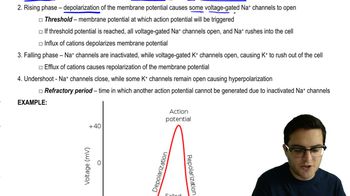Multiple Choice
At one point, as a cell carried out its day-to-day activities, the nucleotides GAT were paired with the nucleotides CUA. This pairing occurred __________.
1393
views
 Verified step by step guidance
Verified step by step guidance Verified video answer for a similar problem:
Verified video answer for a similar problem:



 4:07m
4:07mMaster Review of Transcription vs. Translation with a bite sized video explanation from Jason
Start learning